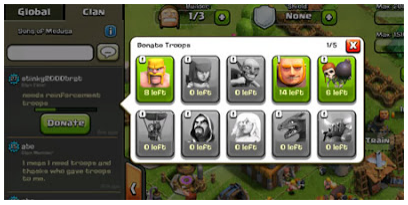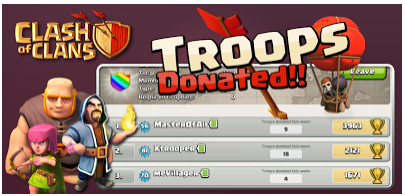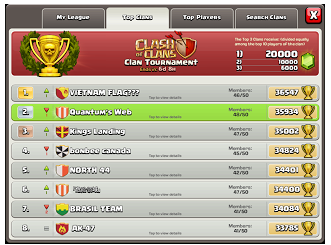In November, we started publishing a series of translations of articles by Mikhail Katkoff, product director at Scopely, about the mechanics of midcore games. Today is the third part devoted to the social component.
My career in the gaming industry began when Facebook was the leading gaming platform. And for a long time I considered the social component only as a tool to increase virality, a lever that game developers can use to return or attract users. But, fortunately, in a few years, both my view of the problem and the leading platform have changed.
The scheme according to which the user is first forced to link the game account to Facebook, and then send dozens of invitations to his friends, in some cases still works, but you will be surprised to learn how poorly it fits midcore titles. So instead of talking about K-factors (K=I x C, where I is the number of invitations sent by each user, and C is the conversion rate from each invitation sent) and virality, I want to talk about real social mechanics, mechanics that bring something to the gameplay itself, improve the gaming experience and enliven the game itself.
Cooperation
What makes the game social is the ability of users to play with each other. Or at least the illusion that this is what is happening. It seems to me that social mechanics should be implemented first and foremost to improve retention. As I have already written (link), retention is a conversation about progress. But progress is, let’s say, a player’s metric. For example, I see my progress in the project after a few weeks of playing, but for those who have been playing the same game for months, I am still a noob.
To solve the measurability of progress, we can use social mechanics. When players collaborate on a project, they compare their progress with each other. This process leads to two things.
Firstly, laggards, seeing other people’s achievements, want to achieve the same.
Secondly, successful players feel their own superiority over others and want to keep it.
The main thing to remember when creating competitive mechanics is that competition between players should take place where players can easily brag about their achievements. It is also important to remember that the competition should bring satisfaction to both sides.
Example: Puzzle & Dragons
Puzzle & Dragons mainly relies on one social feature: the presence of an assistant. There is no chat, PvP, guilds, integration with social networks in the game. Moreover, every time visiting a dungeon, a new player is chosen as an assistant – and the number of friendly requests sent by players to each other is huge, despite the simple mechanics.
Editor’s note: it’s funny, but most Puzzle & Dragons clones, instead of adding chats, guilds, social networks, blindly repeated the basic mechanics and did not go further. As a result, the main card butler on the market is still the GungHo game.
About the assistant.
Before visiting a dungeon, the player must always choose an assistant. The main card of his deck acts on behalf of the assistant. Every time you use the assistant’s card directly while traveling through the dungeon, the assistant receives Pal Points, which are a kind of virtual currency needed to get new monsters. The more often a user enters the game, the higher the chance that he will become someone’s assistant and, accordingly, earn more Pal Points and get more monsters.
The “helper” feature follows the golden rule of cooperation – both sides benefit from cooperation
After the user clears the dungeon, he can send a friend request to the assistant. Players can have a limited number of friends. The higher the player’s rank, the more friends he can have. Using friends as helpers gives you more Pal Points, as well as building a leadership skill that increases the strength of your monsters. Having active friends is critical, since players can use assistants only once (until their next visit to the game).
So, in a nutshell, the social mechanics in P&D increases retention by encouraging frequent visits, and encourages users to develop more actively, because the cooler the monster they can offer other players as an assistant, the more often it will be used, which means the more they will be able to get Pap points that will give them more powerful monsters.
And what is especially important, all this happens “in plain sight”. I mean, it’s all about the player’s main monster. Everyone can see his level and stage of development when choosing an assistant. Moreover, they can be played. And this is a great demonstration of your “coolness”. Plus, such mechanics are beneficial to both sides. One player gets points, the second – a cool monster that helps with the passage of levels.
Example: Clash of Clans
We all know how the mechanics of donating troops work. After joining the clan, players can request reinforcements/give troops to other players. Donat can both help in the defense of the base, and be used during the siege of someone else’s village. Despite the simplicity of donating, this is one of the most powerful social features I have come across.
Donat is a very powerful social tool
From a gaming point of view, there is no limit on how many troops a player can add per week. There is no bonus for this, no penalty for absence. All the rules regarding donation are set by the players themselves. Thanks to the ability to expel people from the clan, these rules have real force.
In practice, it looks something like this: after joining an active clan, the user must constantly donate troops. In active clans, as a rule, there is a number of necessary weekly donations. If a player does not donate the required number for no reason, he is excluded from the clan. Donat increases retention, as players begin not only to constantly train troops for donations, but also to grow in the game itself, since powerful units are asked for donations.
Since donat becomes a natural part of the game cycle and requires the player to constantly progress, this is a very powerful monetization feature. Every month there is an update with new troops and new troop levels. Since clans require the best troops to donate, players are forced to buy the missing resources (and spend more time on research) to complete updates. To be the first in the clan, the one who is most active, donates new units, puts them on a social pedestal and makes others develop faster.
Donat Tracking turns collaboration into competition
Like P&D, Clash of Clans uses the golden rule of cooperation mechanics. Donat is, on the one hand, an opportunity to show off the number of units he can share and their level, on the other hand, those who request troops need it.
Competition
Rivalry between players is another great way for players to “measure progress”. The problem with most games is that they introduce this element too early. The best way, I think, is to give players the opportunity to enjoy the game first, then bring them together with other players, let them cooperate with each other, and only after that – let them compete.
Generally speaking, there are two types of competitions:
- where players compete with each other individually
- where one group competes with another group
Leaderboards
Do you want to target top players? Honor boards are one of the best ways.
Simply placing the players in the order of the number of points they earned will not impress most users, but those who pay attention to this list risk becoming the most involved in the project.
Clan leader boards are a great way to increase the effect of conventional leaderboards
The next step is to create group lists, like the Clan Leaderboard in Clash of Clans. This step, where each group is perceived as a whole, will encourage each player in the group to work to the maximum (and those who will not do so will be excluded by their groupmates).
Guild Wars
To simplify it, guild wars are an event concerning two groups of players and launched by the players themselves. The presence of leaderboards makes guild wars very powerful events in social terms. But here the dominant role is again played by pressure from members of their guild / clan.
Holy Wars in Rage of Bahamut is a perfect example of guild warfare. It takes quite a bit of time. During it, members of one clan randomly fight with members of another clan. It begins at the moment when one of the clan leaders declares war. The enemy clan is randomly determined.
One of the key features of such wars is the distribution of special titles, which, in turn, stimulate a certain number of players. By allowing someone to be appointed leader in such events, someone to be deputy leader, chief of attack/defense, you will not only enable the guild to work more efficiently, but also automatically force the selected players to become extremely involved in the project, because otherwise they will let their team down.
Raids
Essentially, raids are similar to guild wars, as they unite groups of players against a common enemy for a certain time. Raids differ from guild wars in two things.
Firstly, raids are organized against AI.
Secondly, since there is a confrontation between live players and AI in them, they are usually built around a story, develop according to the game plot. In addition, according to the results of the raids, players are awarded according to how active they were during the events.
Kixeye Studio has become adept at creating raids. In all its games, raid events occur periodically, all participants of which receive a reward according to how actively they participated in it.
Participation in raids gives access to special units / maps / unique buns. And yes, raids are actively advertised: videos are released for them, they are written about in public, this makes them an important part of the game and its plot.
The main thing is not to drive!
I know that many people disagree with me on the issue of social mechanics. For these people, the social component rests on virality, which can be directly related to the number of returning players and new installations. For them, X invitations are Y installations.
But it follows from my experience that such an approach does not work in the long term. After a couple of flashes on the direct installation, you will need more and more invitations for one installation. This leads to an increase in the number of requests and invitations, which will spoil the impression of the game and reduce retention.
It is better to avoid this approach and follow a very simple rule when it comes to social buns.
First, give the players time to figure out the game on their own. Let them try out the project, understand it, love it. As soon as they like the game, they will want their friends to play it too. This is where they should be presented with social tools that will allow them to cooperate with each other.
Cooperation should be beneficial to both sides and take place in plain sight (so that some have the opportunity to show off their achievements, while others have the opportunity to look at this matter). Only after the introduction of cooperation can you introduce a competitive element.
Mechanics of midcore games: Part 2
Mechanics of midcore games: Part 1
A source: http://www.deconstructoroffun.com/





